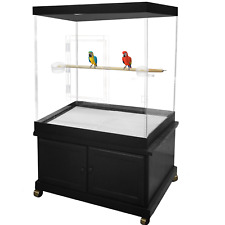Not So Stupid Pet Tricks for Cats

The Benefits of Trick Training
Teaching new behaviors promotes a healthy lifestyle and helps relieve feline boredom while offering cats mental exercise, says Cheryl Kolus, a Colorado State University veterinary student and a volunteer with the Larimer Humane Society. Training also gives them an outlet for instinctual behaviors. "When you’re working on a trick through positive training, it becomes a bonding experience for you and your cat," adds Rentola.
Trick Training How-To
Here are five fun tricks for your cat. Repeat a trick two to five times per session.
- Sit: Move the treat up above cat’s head so your pet sits back. At the same time, say your cat’s name along with "sit." Once your cat assumes the position, click and offer treats and praise.
- Beg: Hold a treat over your cat’s head so it has to sit up and reach with its paws to get it. Say "beg" along with your pet’s name, and the moment kitty does something resembling the trick, click and hand over the treat. Do this around three to five times, depending on the cat’s attention span. Then put the treat away and say "beg" again. If your cat performs the trick without being asked, immediately offer praise and a treat.
- Fetch: Toss a toy a few feet in front of you and let your cat run after it. As kitty rolls around with it, walk over and offer praise. Take the toy and say thank you, then pet your cat for a short while before throwing the toy again a little further. Retrieve the toy again as your cat plays with it, and this time, return to your original position before throwing. Repeat the procedure a few times, then give your cat a final rubdown and put the toy out of sight until the next session. Conduct these training sessions at the same time each day, and your pet will start anticipating this game. Every time you play, it will carry the toy closer and closer to you.
- Play Dead: Call your cat to a place it enjoys. When it comes, offer a treat and say its name in a soothing tone. Then put your hand on its back and say, "Play dead." Gently press down on your cat until it lies down. Praise and click before giving another treat. With enough practice, your cat will learn to obey this command without your hand on its back.
- High Five: Hold a treat out of your cat’s reach, inviting your pet to sit in front of you. Once kitty comes, say, “High five,” and lower your hand. If your pet tries to get the treat with its teeth, raise your hand out of its mouth’s reach. Kitty will then try to get the treat with its paw. If the paw hits your palm, click, provide a treat and offer praise. If kitty doesn’t reach for the treat, close your hand over the treat for five seconds, then try again from the start.
A few more important things to keep in mind as you train:
- Keep sessions short. Cats have short attention spans, so train in a quiet place each time.
- Train before meals. This is when your cat is most responsive. Be sure to break up treats into smaller bits so your cat doesn’t end up overeating.
- Be patient. Never yell at your cat, or "it will shy away from wanting to participate, no matter how tasty the treat," reminds Rentola.
- Time rewards correctly. In the seconds it takes to reward a good behavior with a treat, kitty may get distracted. "For all she knows, turning her head is what got her the reward," says Rentola. Eventually, your cat will respond to your voice alone.
- Repeat often. Hold one or two five- to 10-minute sessions at scheduled times every day for two to three weeks.
Despite their reputation, cats are very trainable and social. Teaching yours to obey your commands will help debunk the myth that dogs are the only loyal pets. Just remember, as Kolus says, "Patience, kindness and consistency are key."













